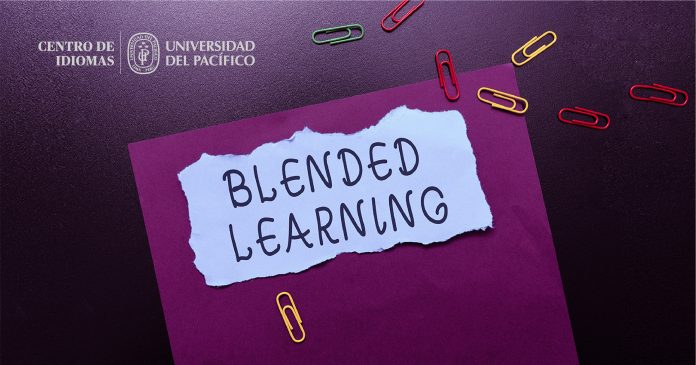The TEFL field has not been immune to the effects of the pandemic. Thus, at the onset of the 2022 academic year, we find ourselves before three possible teaching scenarios: face-to-face classes, virtual classes or a combination of these two: blended teaching. To successfully tackle any of these three scenarios we need, more than ever, a clear understanding of todays’ methodology. It does not matter if you are teaching virtually, face-to-face or blended, consider these ten points and you will have a good methodological command.
- Methodology guides our use of technology. Not the other way around.
Let’s return to the leading role of methodology in our classes. Don’t put technology before methodology. We need to apply our methodological criteria to know how to use the full range of technological devices that are now available.
- Not only one method but the selection of effective techniques from a variety of methods or approaches.
Are you still talking about the Communicative Approach? Before the start of this millennium, twenty-two years ago, EFL teachers stopped switching from one approach to another. It is a common idea to believe that the Communicative Approach was the only approach strong enough to stick around. Not quite. Today, the Communicative Approach is an umbrella term that encompasses all best teaching practices in TEFL.
Our teaching today is eclectic. In other words, instead of limiting ourselves to a set of techniques from a particular approach, we use techniques that come from a variety of approaches and methods such as our current use of audio linguistic techniques for teaching pronunciation.
- The objective of a lesson would never be to learn a grammatical structure like “the Simple Past”, but its communicative function, like “describing past events”, among others.
How important is for our lessons to be communicative?
The most powerful source of motivation for learning a language is when we realize our ability to communicate in it. How contradictory is then to learn grammar or vocabulary decontextualized from a real communicative act.
- The development of your students’ autonomous learning and critical reasoning are important pillars of today’s methodology.
Two words of great importance in our current teaching practice: autonomous learning and critical reasoning.
Today our students have access to a variety of material where they can obtain information about the foreign language they are acquiring. Therefore, they need to develop their ability to learn on their own. A good first step is to help them discover the strategies they use to learn.
About the development of critical thinking, our EFL courses are full of opportunities to help our students develop this skill.
- An important new role for EFL teachers: Strategies provider
A requirement of the younger generations: Strategies!
We see it over and over again: people want tips and strategies. If your students asked you for strategies to improve listening or reading skills, for example, would you have a set of strategies to share with them? As a speaker of a foreign language, are you aware of your own strategies to communicate or to improve a specific skill?
- Bring the real world to your class
Do we offer a real communicative practice?
We often ask our students to participate in a given communicative activity that is doomed to failure by this basic error: there is no real need to obtain information either because what they are talking about is in a context that is not real or worse still, the information sought in the activity is at the end of a book!
- Dare to add variety to your lessons or you’ll run the risk of becoming a predictable teacher
A textbook or a digital platform is there to support teaching and learning but do not follow it blindly. Consider this: textbooks, no matter how good they are, cannot satisfy all the different learning styles found in a class. How could they do it if unit after unit, and book after book, the unit structure is constantly kept.
- Be a reflective teacher
Slow down a bit to analyse the effectiveness of your lessons. Think of your classroom as a wonderful “lab” where you can get very interesting information about how your students acquire and learn a language. Write it down systematically and you will have such important information about what worked or not in your classes that will enrich both your teaching knowledge and your colleagues’.
- Pronunciation first
Include pronunciation instruction in all your lessons. Now we have a lot of free material to teach pronunciation. Keep in mind that good pronunciation training not only benefits your students’ speaking skills, but also their listening comprehension skills.
10. Useless lists to be forgotten!
Vocabulary lists of words whose meanings are not related or do not belong to the same semantic field are destined to be forgotten. If in doubt, try this: Learn the equivalent of the following words in a language you are learning: hill, pot, January, age, weather, and expensive and see two weeks later how many of them you can remember. You´ll be disappointed with your score!
Now try the following activity with your students: ask them to remember two lists of words. List A: boil, steak, spoon, plate, tap and List B: boil, bake, fry, steam. You will see that two weeks later your students will remember the meaning of the words in list B simply because they are related.
Now, if you wish to become an expert in the teaching of vocabulary do not teach new words in isolation but with a group of words that often go together. This is called “collocation” For example, instead of teaching the word “wine” teach them, “red wine” and “white wine”. In the same token, instead of just teaching the meaning of “steak” teach this new word with the words that it usually co-occurs such as “raw” “medium” or “well done”.
These ten points are the first step. Why don’t you add more points? This exercise will help us to always think methodology!










